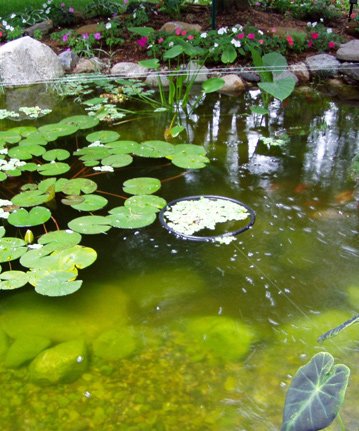Algae 101 Chapter 1

Algae are officially classified as any of various chiefly aquatic, eukaryotic, photosynthetic organisms, ranging in size from single-celled forms to the giant kelp. Algae were once considered to be plants but are now classified separately because they lack true roots, stems, leaves, and embryos. Though often referred to by the Water Feature world in ‘expletive deleted’ terms, algae is truly beneficial. It provides the majority of Oxygen in the water column through photosynthesis and serves as a primary nutrient source for a multitude of other aquatic organisms, including fish. On a global scale, algae, as a whole, produces more atmospheric Oxygen than all of the world’s combined terrestrial plant life. There are over 300,000 identified species of algae (no one knows the exact number) and around 6,000-7,000 species of green algae (again no one know for sure). They all share the same basic requirements – sunlight and nutrients (Nitrates and/or Phosphorus). In confined aquatic environments, overgrowth of algae can present not only an aesthetic problem but also, at times, a toxic problem as well. Dying algae blooms can rapidly exhaust the available Oxygen in the water resulting in mortality of fish and other aquatic organisms. Control is best accomplished proactively by maintaining lower, more acceptable nutrients levels in the water.

Algae are officially classified as any of various chiefly aquatic, eukaryotic, photosynthetic organisms, ranging in size from single-celled forms to the giant kelp. Algae were once considered to be plants but are now classified separately because they lack true roots, stems, leaves, and embryos. Though often referred to by the Water Feature world in ‘expletive deleted’ terms, algae is truly beneficial. It provides the majority of Oxygen in the water column through photosynthesis and serves as a primary nutrient source for a multitude of other aquatic organisms, including fish. On a global scale, algae, as a whole, produces more atmospheric Oxygen than all of the world’s combined terrestrial plant life. There are over 300,000 identified species of algae (no one knows the exact number) and around 6,000-7,000 species of green algae (again no one know for sure). They all share the same basic requirements – sunlight and nutrients (Nitrates and/or Phosphorus). In confined aquatic environments, overgrowth of algae can present not only an aesthetic problem but also, at times, a toxic problem as well. Dying algae blooms can rapidly exhaust the available Oxygen in the water resulting in mortality of fish and other aquatic organisms. Control is best accomplished proactively by maintaining lower, more acceptable nutrients levels in the water.



